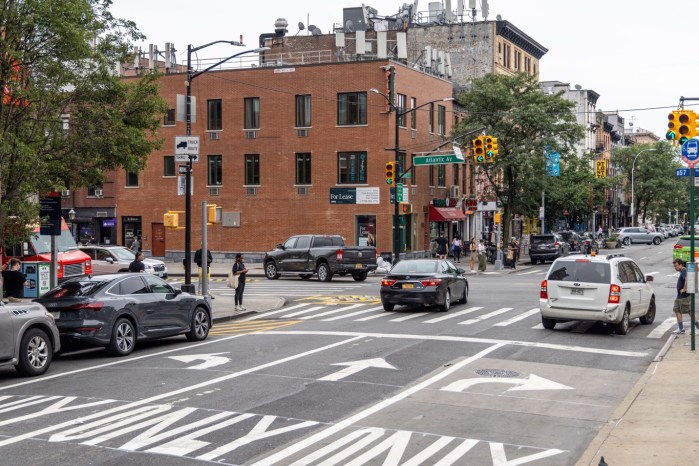Truth be tolled, one local congressman thinks its time for a change.
Staten Island Rep. Dan Donovan has asked the Metropolitan Transportation Authority to study the impact of reestablishing a two-way toll on the Verrazano Bridge, which would nix the current one-way toll that’s been blamed for rush-hour traffic jams that stretch as far north as Gowanus and Park Slope.
As the Staten Island Rep for a Republican-dominated House, Donovan’s support would be crucial for any changes to the federally-controlled Verrazano Bridge, and his sudden interest in a new study is a good sign that change may finally be coming to the span’s loathsome toll structure, according to Community Board 6 District Manager Craig Hammerman.
“If there’s a sense conveyed to the government and MTA that there is interest and support on both sides of the Verrazano Bridge for this, then I don’t see how this wouldn’t happen,” said Hammerman, who in January fired off a letter to Gov. Cuomo requesting a similar study of a two-way toll’s impact.
Designed to appease denizens of New York’s other island borough, the bridge’s current one-way toll exists — bizarrely — thanks to a 1986 Act of Congress, making it the state’s only municipal span governed by federal lawmakers.
Back in the dystopian helter-skelter of the early 1980s, Staten Island voters kicked up a fuss about pollution generated by the Verrazano’s massive toll plaza, which ensnared traffic on the other borough’s side of the span.
But the new toll structure not only benefitted Richmond County residents, but also commuters from Dirty Jersey, who realized they could take advantage of the new one-way toll — which only taxes drivers headed into Staten Island — and save money on their trip by taking the bridge into Brooklyn instead of the tunnels into Manhattan.
And the toll-skipping scheme is especially cost-saving for truckers, who can be taxed more than seven-times what passenger cars pay for a trip across the bridge.
In the more than three decades between then and now, transit advocates throughout Brooklyn and Lower Manhattan — including Board 6, Bay Ridge’s Community Board 10, and Democratic Rep. Jerrold Nadler — have called for drivers to be once again taxed heading in both directions along the Verrazano, citing traffic concerns and lost revenue.
But Staten Island congressmen have routinely thwarted change on behalf of their right-of-center constituency, making the reform impossible in a congress that — barring a few years during former President Obama’s first term — has been dominated by Republicans.
But Hammerman renewed the push for a two-way toll with his January letter to Cuomo in light of new cashless toll technology, which, in combination with the EZ-Pass, allows drivers to breeze across the bridge without stopping to pay a toll, relieving Staten Islanders of their pollution argument when it comes to preserving the one-way tax scheme.
At the time, a rep for Donovan told Brooklyn Paper the congressman wouldn’t support any changes without a study proving its efficacy, and his comments proved to be more than just hot air after the federal lawmaker fired off a letter to acting MTA chairman Fernando Ferrer requesting a study to determine the traffic and revenue generating impacts of the toll change.
Donovan’s newfound interest in the Verrazano comes as a very welcome development in the long push for reason, according to Hammerman.
“Having Donovan on board would obviously be extremely helpful, if not critical to making this happen,” the district manager said.
The congressman went on to indicate that if a study found that a two-way toll would create positive change, he’d be more than happy to support it.
“If the MTA is going to recoup the millions of dollars they’re losing now by having a one-way-toll and it doesn’t cause more traffic — in fact it lessens traffic — and we could use some of that revenue that they would now generate to help the people of Brooklyn and Staten Island, then it is something I would very much consider,” Donovan said.
In response to Donovan’s request, Transit Authority president Donald Spero wrote in a letter dated April 4, “we are certainly willing to look at these potential impacts,” but stopped short of confirming an actual study is underway. A request for clarification from the transit authority only yielded greater confusion, with spokesman Chris McKniff pulling back on Spero’s comment and stating Donovan’s request was merely under evaluation.
The congressman seems to feel differently. In an April 14 letter to Spero, Donovan wrote that he was “pleased that your agency will analyze commercial vehicle routes, traffic impacts on Staten Island and Brooklyn roads, and revenue impacts as part of your review,” and asked the agency president to “please share an approximate timeline for your analysis.”
























